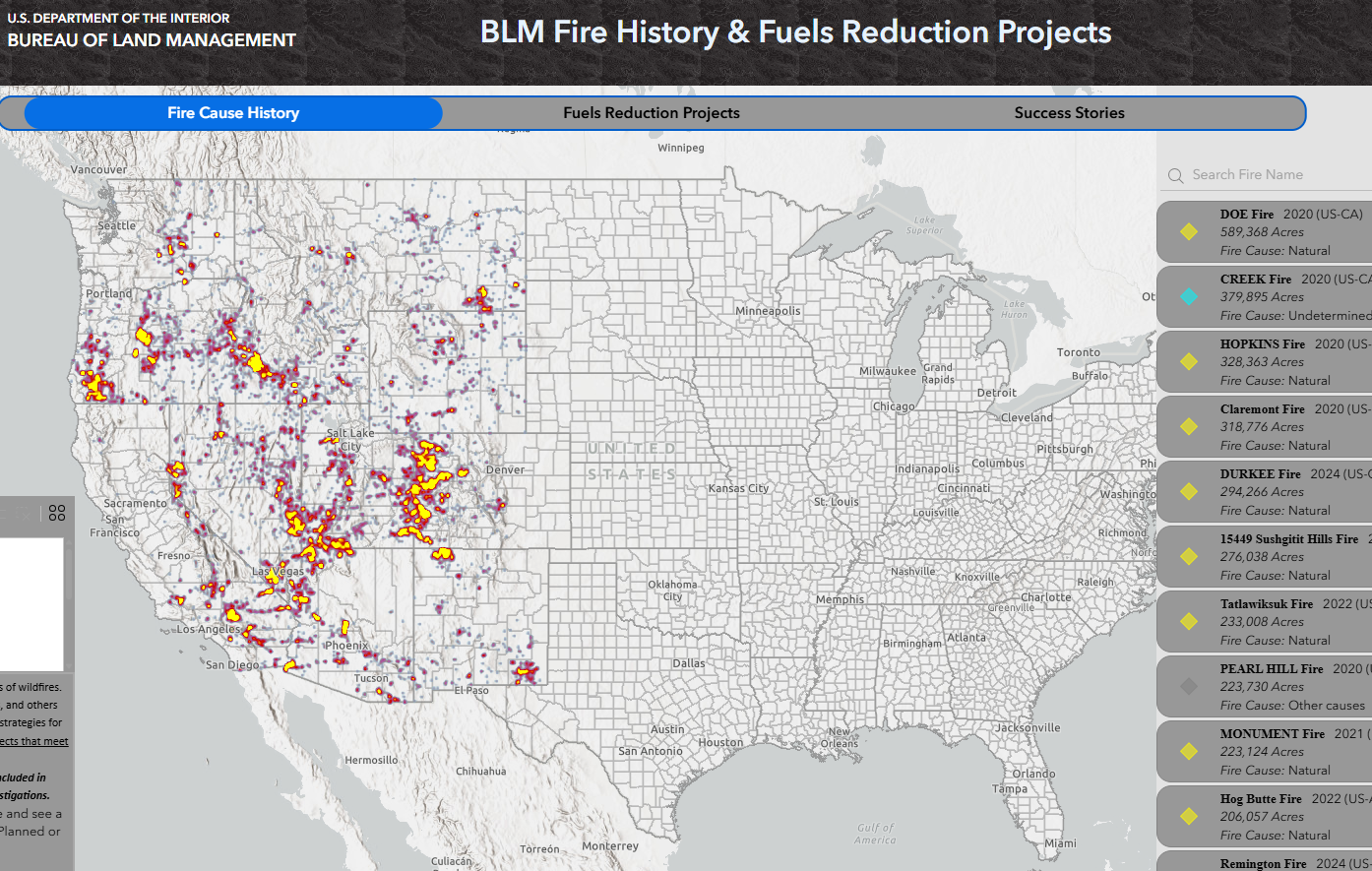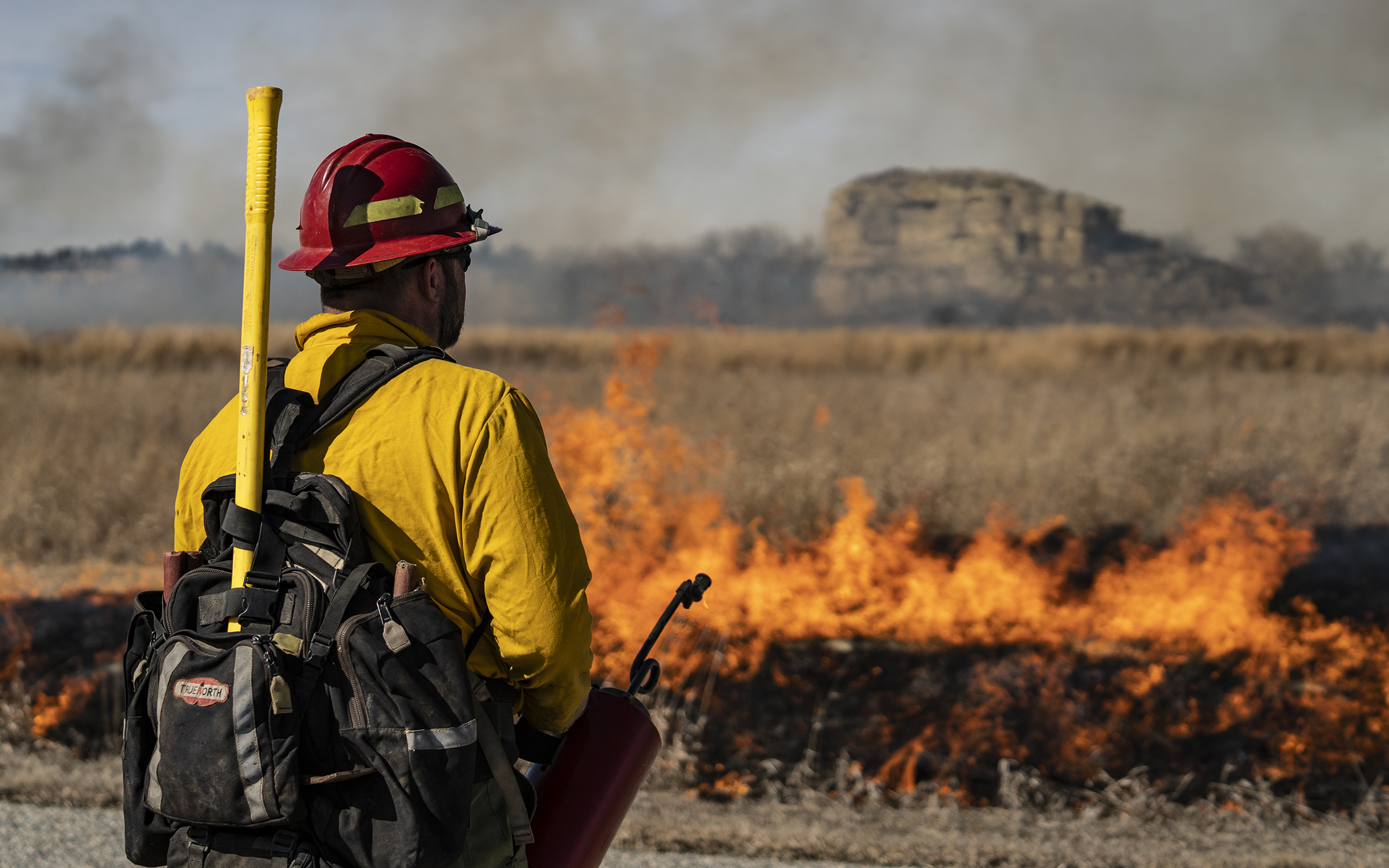BLM fire history and fuels reduction projects: an interactive map
The BLM supports public safety and healthy, resilient public lands by reducing fuels at a landscape scale. This 2025 tool is a resource for information on fire history, fire causes, and BLM projects that reduce future wildfire risk.

What are fuels?
Fuels include anything that can burn. In wildland fire, the term usually refers to vegetation, including grasses, shrubs, trees, dead leaves, and fallen pine needles. As fuels accumulate, so does the risk of catastrophic wildfire. High fuel loads make wildland fires more difficult and dangerous to manage.
Why manage fuels?
The BLM manages fuels to restore and maintain ecosystems and to protect values at risk, and to improve the efficiency and safety of wildfire suppression.
Fuels management plays a critical role in reducing the spread of wildfires when they occur and moderating the effects of wildfires where they intersect with fuels projects. Fuels management improves wildfire resiliency and promotes fire-adapted communities. This work is critical in the context of fire years across the nation trending hotter, longer, and more destructive.
How do we identify wildfire risk?
Wildfire risk continues to grow in the United States. The BLM national office of Fire Planning and Fuels Management implemented an assessment to map wildfire risks across the nation. Identifying areas where wildfire poses a threat to communities and resources across BLM managed lands is just the start.
The risk assessment was completed in 2020 and utilizes comprehensive modeling and data sets to show the wildfire risk on a national scale. The risk assessment results, in combination with other factors determined by the local unit, help the BLM determine priority areas for allocating fuels program funding, focusing on areas with the highest risk.
BLM’s Unique Challenge: The Fire and Invasives Cycle
Most BLM-managed public lands are composed of non-forested shrub and grass ecosystems. Invasive weeds, which make landscapes more flammable, are present in many of these ecosystems. Cycles of frequent wildfire followed by invasive weeds are impacting vast areas of the western U.S., particularly in the sagebrush-steppe ecosystem. Because of the fire and invasives cycle, many western ecosystems are experiencing too much wildfire compared to historical fire regimes. Suppressing wildfires in these ecosystems is costly and puts wildland firefighters and the public at risk.
The BLM is working to preserve ecosystems that are currently not impacted by invasive weeds while restoring ecological balance in other ecosystems where invasive weeds are changing the landscape and increasing wildfire risk. This work supports healthy public lands, reduces wildfire risk and decreases wildfire suppression costs.
To address these fire-invasives challenges, the BLM conducts a wide variety of fuels management projects, including fuel breaks, mechanical projects, grazing, chemical, biological projects, and prescribed fire. Fuels management options are challenging in areas where invasive weeds are present; many of these areas are experiencing too much wildfire.
For most vegetation reduction projects, assessments are conducted before selecting one or more fuels management tools. These assessments involve consideration of all feasible methods, including their potential effectiveness based on previous experience, local monitoring results and best available science, potential environmental impacts, and costs.
Contract with us!
BLM Fuels Management contracting tasks:
Examples of manual items (ppt)
Examples of mechanical items (ppt)









